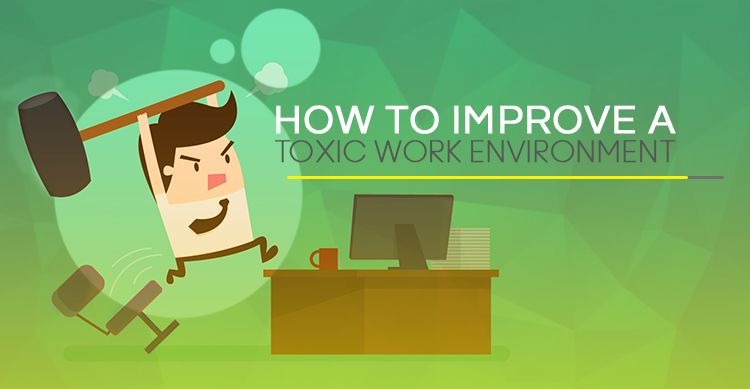A good work environment is essential to company’s growth and success. Bain & Company reported that companies with more engaged workforce grew revenue 2.5x more than companies with a less engaged one.
A toxic work environment on the other hand drags down your company’s growth. A bad culture kills employee morale, pulls down the office energy and perpetuates a sense of incompetence.
It is hard to define a toxic environment but here are some signs that your office culture is turning negative:
- Low employee morale
- Sluggish rate of project completion
- Frequent miscommunication
- Blame games
- Employee resentment
- Absenteeism
- High turnover
How does a company come to the point of having a toxic work environment? After all nobody planned to have a bad work culture, right? Not planning for a healthy work culture is actually the reason for landing up in such a situation. A good culture has to be actively nurtured by leadership and personnel management in a company.
More often than not the company culture is a reflection of business leadership. This is made clear by cases like Uber which gave excessive power to its co-founder Travis Kalanick and had to face numerous allegations last year.
For others like Amazon, a stressful work environment is just by-product of their value to be the best at any cost.
How can you bring back your company culture after it has become toxic? Obviously something has gone wrong down the line. Your first step is to inspect your journey and pin point the mistakes that happened. More often than not there will be many things that require change.
Following are some effective ways to clean out toxicity and have a healthy, happy environment again:
- Improve communication
Bad communication is the number one cause for a toxic culture. Companies with a bad culture usually have the grapevine channel stronger than formal communication. Make your formal communication robust, timely and transparent.
Share everything with employees officially so that there is no room left for rumors and fear. Not addressing a sensitive issue only makes it more likely for miscommunication. So share everything openly and honestly.
- Review your Leadership
Clean up your system of people you are toxic. Is there someone in the top management who is perpetuating stressful work practices or politics? Work ethics always trickle down from the top management. Hence, it is important that your leadership shares the values of your companies.
Sometimes it may also be a handful of employees in the executive or mid-management who are contributing to the problem. Remember that no one is worth it if they bring fear, stress and politics to the office every morning.
- Review the Company structure
Clash of roles, duplication of roles and complicated reporting structure can also be a source of conflict in office. Review your company hierarchy and remove and complications. Confusing structures give rise to unnecessary blame game and stress.
- Take Employee Feedback
How do you take actions on the above points? How would you know which leaders are causing a problem and weather the reporting structure is confusing or not? The answer is employee feedback.
Change is company culture is for your employees and hence their opinion must be taken in the activity. It would be a good idea to take representatives from each department and form a ‘cultural change committee’.
This will spread a loud and clear message to everyone- ‘we have taken note of the bad culture and we are going to change it’. This itself will be enough to lift up the spirits.
What makes toxic culture worse is that everybody complains about it in the hallways but nobody admits it in front of the management.
Acknowledging the problem in open will be a signal that things are changing and management is being honest of the ground reality.
- Align Performance Management
Are your employees happy with the way their performance is reviewed and appraisal is done. Appraisal and recognition is a sensitive topic and a common cause of employee dissatisfaction in many companies.
Dissatisfied employees are more likely to spread negativity and spoil office environment. Therefore it is important to minimize the number of employees walking our disappointed from a performance review.
Some of the steps that HR can take are – having a clear KPI and break them down into quarterly or monthly goals. This way the employee has time to take corrective action instead of facing a shock end of the year. Also keep scoring as objective as possible to avoid favoritism in office.
Final Thoughts
A toxic environment is a downhill spiral of negativity which can turn your talent unproductive. Catching early signs of company culture going bad allows you to take corrective action quickly.
Since leadership is the main influencer of culture it is important to review top managers. Make your communication open and timely and review your company structure. Take continuous feedback from employee and involve them in correcting the culture.
